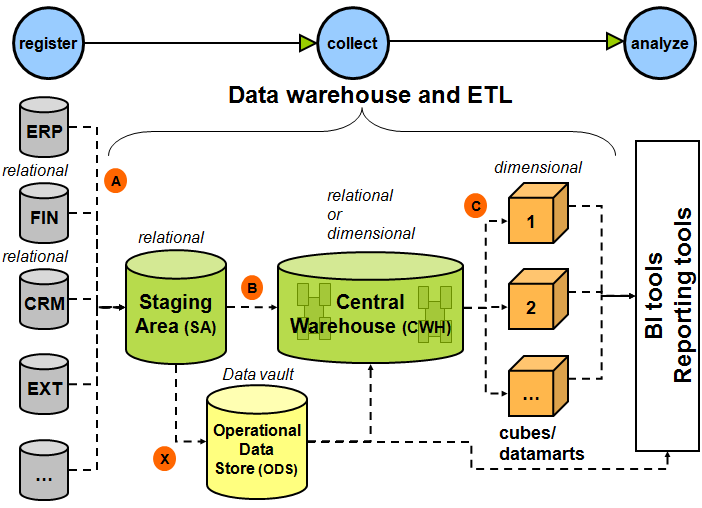ETL
- ETL = Extract, Transform, Load
- ETL is a type of data pipeline that enables data to be gathered from source systems, converted into a useful format, and brought into a data warehouse or other unified destination system.
Data pipeline = a series of processes that transports data from different sources to their final destination for storage and analysis

ETL quality
- what ETL quality testing should be taking into account:
- Completeness: Does the data contain all of the desired components or measures?
- Consistency: Is the data compatible and in agreement across all systems?
- Conformity: Does the data fit the required destination format?
- Accuracy: Does the data conform to the actual entity being measured or described?
- Redundancy: Is only the necessary data being moved, transformed, and stored for use
- Timeliness: Is the data current?
- Integrity: Is the data accurate, complete, consistent, and trustworthy? (Integrity is influenced by the previously mentioned qualities.)
- parts of these qualities are also covered in Data Veracity and Big Data#The V's of big data
ETL vs. ELT
ELT = Extract, Transform, Load
| Differences | ETL | ELT |
|---|---|---|
| The order of extraction, transformation, and loading data | Data is extracted, transformed in a staging area, and loaded into the target system | Data is extracted, loaded into the target system, and transformed as needed for analysis |
| Location of transformations | Data is moved to a staging area where it is transformed before delivery | Data is transformed in the destination system, so no staging area is required |